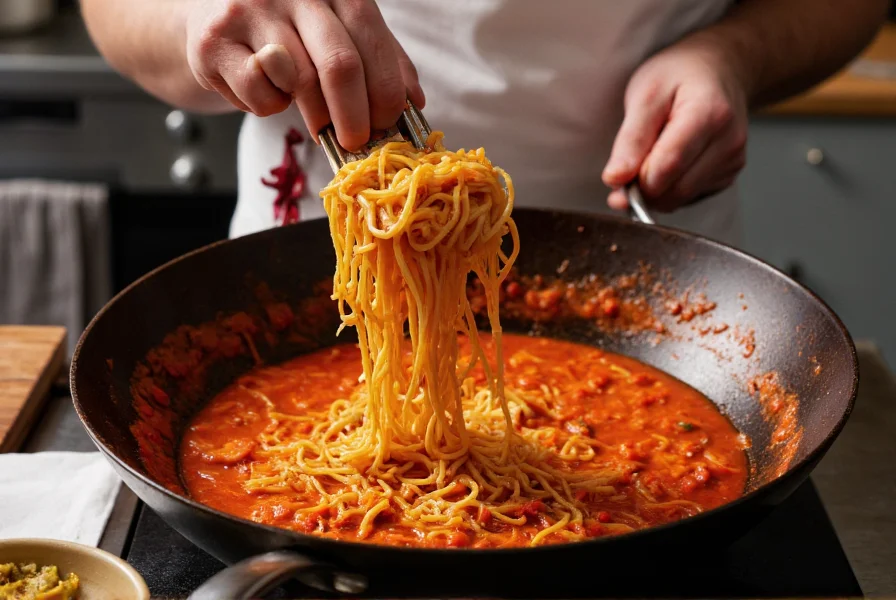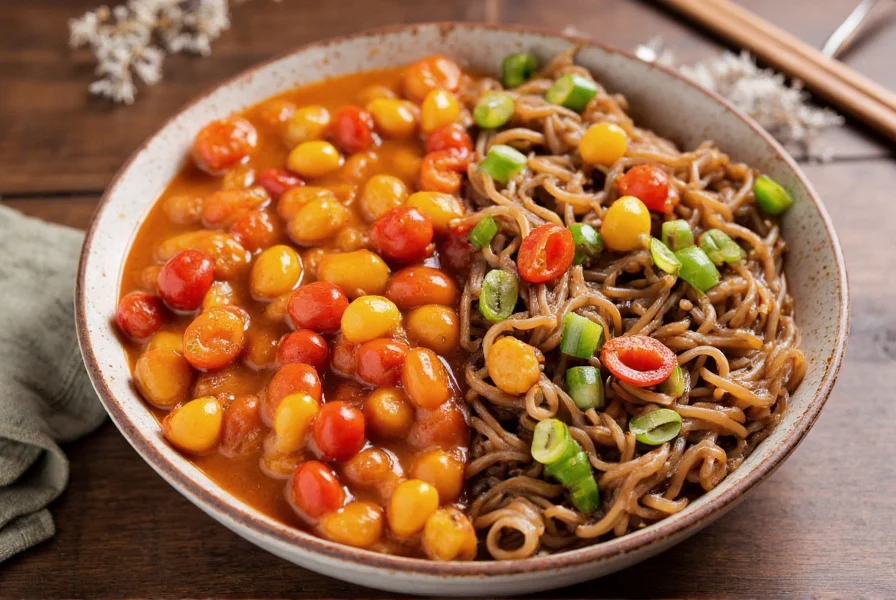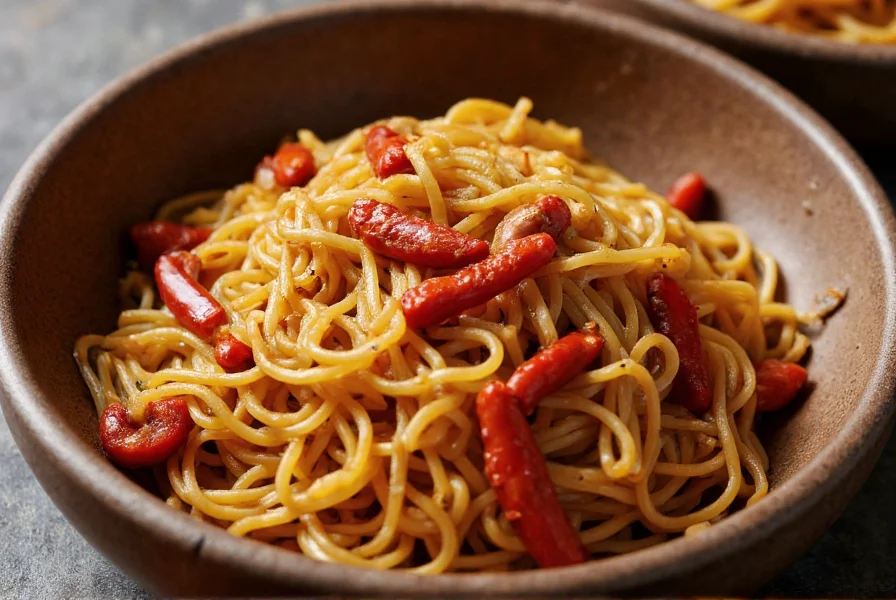When exploring how to make chili with noodles, understanding the fundamental components creates the foundation for exceptional results. This versatile dish bridges culinary traditions worldwide, adapting to local ingredients while maintaining its core appeal of spicy, savory satisfaction. The magic happens when quality noodles meet well-balanced chili—neither overpowering the other but creating harmony through texture and temperature contrast.
The Essential Components of Perfect Chili with Noodles
Creating outstanding chili with noodles requires attention to three critical elements: noodle selection, chili base composition, and integration technique. Many home cooks make the mistake of treating these components separately rather than considering how they'll interact during cooking and serving.
Noodle texture significantly impacts the final dish. Fresh wheat noodles provide chewiness that holds up to robust chili sauces, while rice noodles offer a lighter alternative that absorbs flavors beautifully. For authentic chili with noodles recipe success, consider these professional recommendations:
| Noodle Type | Best Chili Pairing | Cooking Tip |
|---|---|---|
| Fresh udon | Meat-based chili | Par-cook before adding to chili |
| Ramen noodles | Broth-based chili | Cook separately to prevent mushiness |
| Rice noodles | Thai-inspired chili | Soak rather than boil for perfect texture |
| Spaghetti | Tomato-based chili | Add directly to simmering chili |
Global Variations Worth Exploring
Chili with noodles appears in culinary traditions worldwide, each with distinctive characteristics. Understanding these variations helps you select the perfect version for your taste preferences and occasion.
Chinese Dan Dan Noodles feature minced pork in a spicy chili oil sauce with Sichuan peppercorns, creating that signature mouth-numbing sensation. The authentic preparation involves serving the chili separately from the noodles, allowing diners to mix proportions to their heat tolerance.
Korean Budae Jjigae ("Army Stew") combines instant ramen with chili-infused broth, American-style sausages, and kimchi—a fascinating fusion born from post-war resourcefulness. This spicy noodle chili variation demonstrates how cultural exchange shapes comfort food evolution.
Thai Rad Na presents wide rice noodles smothered in a thick, dark chili gravy with meat or tofu. The key to authentic chili noodle dishes in Thai cuisine lies in balancing sweet, salty, sour, and spicy elements without letting the chili dominate.

Step-by-Step Guide to Perfect Chili Noodles at Home
Follow this professional technique for restaurant-quality chili with noodles every time. The secret lies in building flavors sequentially rather than combining everything at once.
- Prepare noodles separately - Cook to al dente, rinse under cold water, and toss with neutral oil to prevent sticking
- Create chili base - Sauté aromatics (garlic, ginger, shallots) before adding chili paste and proteins
- Develop depth - Simmer chili base with broth or tomatoes for at least 20 minutes to meld flavors
- Final integration - Gently fold noodles into chili just before serving to maintain texture
- Garnish strategically - Add fresh herbs, sesame oil, or chili crisp after plating for flavor bursts
Avoid common mistakes like overcooking noodles in the chili sauce (results in mushiness) or adding all spices at the beginning (burns delicate flavors). For those seeking easy chili noodle recipe success, start with a 3:1 ratio of chili to noodles and adjust to preference.
Pro Tips for Flavor Enhancement
Seasoned chefs employ several techniques to elevate basic chili with noodles into extraordinary meals:
- Layering heat - Combine different chili sources (fresh chilies, chili paste, chili oil) for complex heat rather than relying on a single source
- Acid balance - Finish with rice vinegar or lime juice to cut through richness and brighten flavors
- Umami boosters - Add fermented black beans, fish sauce, or miso paste for depth without overwhelming spiciness
- Texture contrast - Top with crushed peanuts or fried shallots for crunch against soft noodles
When experimenting with spicy noodle chili variations, remember that chili oil continues to intensify as it sits. Prepare chili base slightly milder than desired, as the heat will develop during storage. For meal prep enthusiasts, store chili and noodles separately then combine when serving for optimal texture.

Serving and Storage Recommendations
Chili with noodles performs best when served immediately after integration. The noodles continue absorbing sauce, so timing is critical for ideal texture. For family meals, set up a DIY station with separate bowls of chili, noodles, and garnishes to accommodate different heat preferences.
Proper storage extends enjoyment of your chili noodle creation. Keep components separate in airtight containers:
- Noodles: 3-4 days refrigerated with oil coating
- Chili base: 5-7 days refrigerated or 3 months frozen
- Reheating: Warm chili base first, then add noodles to prevent overcooking
Revive leftovers by adding a splash of broth or water when reheating to restore moisture. Avoid microwaving on high power, which creates uneven heating and rubbery noodles. For best results with reheated chili with noodles, use a skillet over medium-low heat with occasional stirring.
Frequently Asked Questions
What are the best noodles for chili dishes?
Wheat-based noodles like udon or fresh ramen work best with meat-based chili as they hold up to robust sauces. For broth-based chili, egg noodles maintain integrity. Rice noodles suit Thai-inspired chili variations. Always cook noodles separately to al dente before combining with chili to prevent mushiness.
How can I reduce spiciness in chili with noodles?
To reduce heat without compromising flavor, add dairy (coconut milk works well for non-dairy), a touch of sugar, or acid (lime juice). Incorporate these gradually while tasting. Remember that chili heat intensifies as it sits, so prepare slightly milder than desired. Serving with cooling garnishes like cucumber or yogurt also balances spiciness.
Can I make chili with noodles vegetarian?
Absolutely. Substitute meat with mushrooms, tofu, or textured vegetable protein. Use vegetable broth instead of meat-based stocks. For authentic flavor depth, include umami boosters like fermented black beans, miso paste, or smoked paprika. Many traditional Asian chili noodle dishes are naturally vegetarian or easily adapted.
Why do my noodles get soggy in chili?
Noodles become soggy when cooked directly in chili sauce or left sitting too long after combining. To prevent this, cook noodles separately to al dente, rinse under cold water, and toss with oil before adding to chili. Only combine noodles with chili immediately before serving. Store components separately for meal prep to maintain optimal texture.
How long does chili with noodles last in the refrigerator?
When stored properly with components separate, chili base lasts 5-7 days refrigerated while noodles last 3-4 days. Combined chili with noodles is best consumed within 24 hours as noodles continue absorbing sauce. For longer storage, freeze chili base for up to 3 months and prepare fresh noodles when serving.











 浙公网安备
33010002000092号
浙公网安备
33010002000092号 浙B2-20120091-4
浙B2-20120091-4